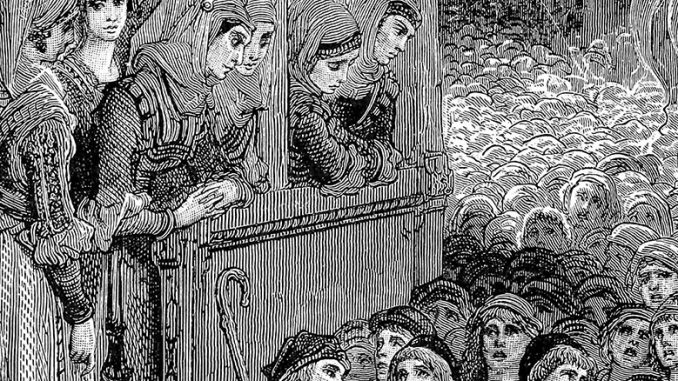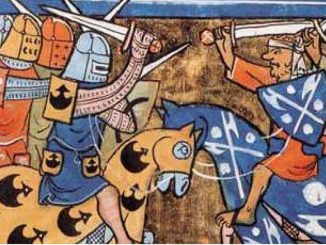
Above: The Children’s Crusade, by Gustave Doré
The Legend of the Children’s Crusade: A Romantic yet Tragic Tale of Religious Fervor
Although the Chronicles of the Crusades often overlook it, the legend of the Children’s Crusade is a captivating and romantic notion that warrants attention. This lesser-known tale revolves around a group of disillusioned children who, after the Crusaders’ failure to maintain the Holy Land following the Battle of Hattin in 1187, took it upon themselves to embark on their own crusade in the name of Christendom.
Leading this extraordinary endeavor was a young shepherd boy named Stephen of Cloues. According to the story, Stephen had a vision of Christ appearing as a pilgrim, humbly seeking a morsel of bread. This divine encounter inspired him to rally other children and launch a crusade towards Jerusalem. Accounts of the event differ, with some suggesting there were between 30,000 to 100,000 unarmed juvenile warriors. However, historical accuracy is debatable, as numbers were often exaggerated during those times.
Curiously, around the same period, a similar group set forth from Germany under the leadership of a young man named Nicholas. It is said that many perished from starvation during their arduous journey.
Stephen, in his fervor, made a grand promise to his followers that when they reached the sea, it would miraculously part, granting them safe passage to the Holy Land. Of course, the sea did not yield, but seven ships offered them passage. Tragedy struck as two of the ships split in half during the treacherous voyage, claiming the lives of 1,400 occupants. The remaining children never reached the Holy Land, instead finding themselves in Egypt, where they were tragically sold into slavery.
In retrospect, the tale of the Children’s Crusade may appear more like a fantastical creation than a factual account. Nevertheless, its significance lies in its origin—a fervent religious belief sparked by the larger Crusades. It illustrates a profound belief that innocence and purity could wield transformative power, even against insurmountable odds.
The Children’s Crusade, whether real or mythical, is a testament to the impact of the Crusades on medieval society. The events inspired a romanticized hope that righteousness and faith alone could alter the course of history. The innocence of these children, driven by an unwavering sense of purpose, captured the imagination of generations to come.
While historical records might dismiss the Children’s Crusade, the spirit behind the tale endures. It reminds us of the potency of belief, the idealism of youth, and the human capacity to find hope and purpose even amidst despair. The legend of the Children’s Crusade may remain a mystery, but its legacy continues to resonate, a timeless reminder of the enduring power of faith and the human spirit.
About Us
TemplarHistory.com was started in the fall of 1997 by Stephen Dafoe, a Canadian author who has written several books on the Templars and related subjects.
Read more from our The Crusades Archives – Templar History

